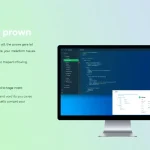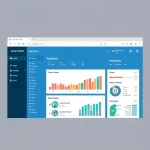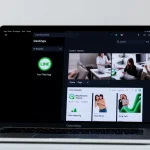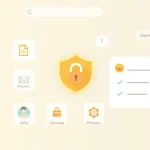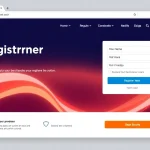In today’s highly competitive music industry, the ability to Grow Audience is crucial for long-term success. Artists and musicians often struggle to connect with their fans, leading to stagnation in their careers. Understanding how to effectively grow your audience is key to thriving in an industry that continually evolves. This comprehensive guide will outline effective strategies, covering everything from understanding your audience to analyzing metrics that can help in refining your efforts over time.
Understanding Your Audience to Grow Audience Effectively
Identifying Target Demographics
The first step in growing your audience is identifying who your target demographics are. This means going beyond just knowing your genre of music. Use tools like surveys, social media analytics, and streaming service data to gather insights on potential listeners. Focus on aspects such as age, location, gender, and even interests outside of music. Understanding these factors will help you tailor your content and marketing efforts to reach those who are most likely to resonate with your music.
Analyzing Audience Behaviors
Once you have identified your target demographics, the next step is analyzing their behaviors. This could include their music consumption habits, the platforms they use most frequently, and the type of content they engage with. For instance, do they prefer music videos, behind-the-scenes content, or live performances? Using analytics from streaming platforms can provide valuable insights into listener habits, allowing you to adapt your approach and content based on what works best.
Leveraging Feedback for Improvements
Another vital component of understanding your audience is receiving and leveraging feedback. Ask for opinions directly from your fans through social media or email newsletters. Engage in discussions that invite feedback on your music, performances, and brand. Use this feedback not just to improve your music but also to make your marketing strategies more effective. Regularly adapting and evolving based on your audience’s input can create a loyal fan base that feels valued and engaged.
Utilizing Social Media Platforms to Grow Audience
Choosing the Right Channels for Your Genre
Social media serves as a powerful tool for artists looking to grow their audience. However, not all platforms are created equal, and not every genre will thrive on every platform. For instance, visual platforms like Instagram and TikTok are ideal for genres that prioritize aesthetics, like pop and electronic music, while platforms like SoundCloud or Bandcamp are perfect for independent artists in niche genres. Evaluate where your target demographics are most active and tailor your presence accordingly.
Creating Engaging Content that Resonates
It’s not enough to just be present on social media; your content must resonate with your audience. Create a mix of content types, such as live performances, music snippets, interactive polls, and storytelling posts. Engaging with your audience through Q&A sessions or sharing behind-the-scenes content can enhance their connection to you as an artist. The goal is to make your audience feel like they are part of your journey, fostering a sense of community that leads to growth.
Incorporating Influencer Partnerships
Influencer marketing has become an essential part of audience growth strategies in the music industry. Partnering with influencers who have a following that aligns with your target demographic can introduce your music to a wider audience. This could range from music reviewers to lifestyle influencers. It’s crucial to collaborate with individuals who genuinely appreciate your work to ensure authenticity, which ultimately leads to higher engagement and connection with potential fans.
Effective Email Marketing Strategies to Grow Audience
Building a Targeted Subscriber List
Email marketing remains one of the most effective ways to grow and engage your audience. Start by building a targeted subscriber list through sign-up forms on your website and social media. Offer incentives for signing up, such as exclusive content, early access tickets, or free downloads. Ensure that your email sign-up process is straightforward and emphasizes the value of being a subscriber, creating a sense of urgency that encourages people to join.
Crafting Compelling Newsletters
Your newsletters should be more than just promotional blasts about new music releases or upcoming shows. Instead, focus on providing value to your subscribers. Share personalized content, including insights into your creative process, updates on your life as an artist, and upcoming projects. Incorporate visuals and personal anecdotes to make it more relatable. Engaging newsletters will not only keep your audience informed but will also help to foster a stronger connection with them.
Measuring Engagement and Performance
To understand the effectiveness of your email marketing efforts, measuring engagement metrics is essential. Analyze open rates, click-through rates, and subscription growth. Tools like Mailchimp or Constant Contact offer robust analytics that can help determine what content resonates most with your audience. Use this data to refine and adapt your future newsletters, ensuring that you are consistently meeting the interests and needs of your subscribers.
Collaborative Events to Grow Audience
Networking with Other Artists
Networking is instrumental in growing your audience. Form connections with other artists in your genre or complementary genres. Attend music events, workshops, or local showcases to meet fellow musicians. Establishing relationships can lead to cross-promotions, supporting each other’s projects, and even collaborative events that can double your audience reach.
Hosting Joint Events and Performances
Collaborative performances and events can be a game-changer for audience growth. Partnering with another artist for a joint concert not only introduces your work to their audience but also creates a unique experience for attendees. Make sure to plan strategically, ensuring that both artists cater to each other’s fan bases while also providing a memorable experience for the audience. Joint events can create buzz, leading to organic growth for both artists.
Promoting Collaborations on Social Media
Once you’ve established collaborations, it’s important to promote these partnerships robustly on social media. Create joint posts, stories, and even live sessions where you perform together or discuss your partnership. This strategy will help you tap into each other’s followers, leading to greater visibility. Always keep your audience updated on upcoming collaborations and tag each other to facilitate mutual visibility and engagement.
Analyzing Metrics to Grow Audience Strategically
Using Analytics Tools for Insights
With the multitude of data available today, artists can no longer underestimate the importance of analytics in growing their audience. Utilize platforms like Google Analytics, Spotify for Artists, or Instagram Insights to understand your audience better. Pay close attention to key metrics such as demographics, engagement rates, and channel performance. This data will inform your content strategies, promotional efforts, and overall marketing approach, allowing for data-driven decisions that lead to audience growth.
Adjusting Strategies Based on Data
Analyzing the data without making adjustments is counterproductive. Regularly review the metrics you’ve gathered and be prepared to pivot your strategies based on findings. If certain types of content drive engagement, consider focusing more on those. Alternatively, if specific platforms are not delivering results, reallocating your resources and efforts can yield better outcomes. Adaptability is key in the dynamic landscape of the music industry.
Identifying Trends and Capitalizing on Opportunities
The music industry is constantly evolving, driven by cultural shifts and technological advancements. Keeping an eye on emerging trends is vital for staying relevant. Leverage tools like Google Trends or social media platforms to identify what’s popular or gaining traction in real time. This allows you to pivot quickly, aligning your music and marketing efforts with current trends, thus maximizing your chances of establishing connections with a broader audience.
